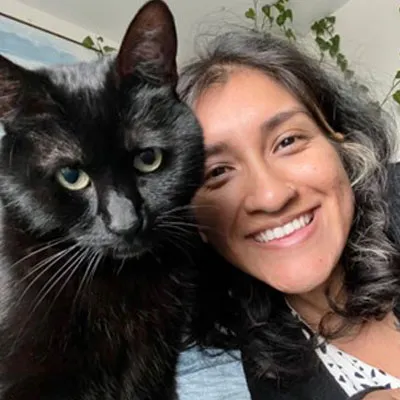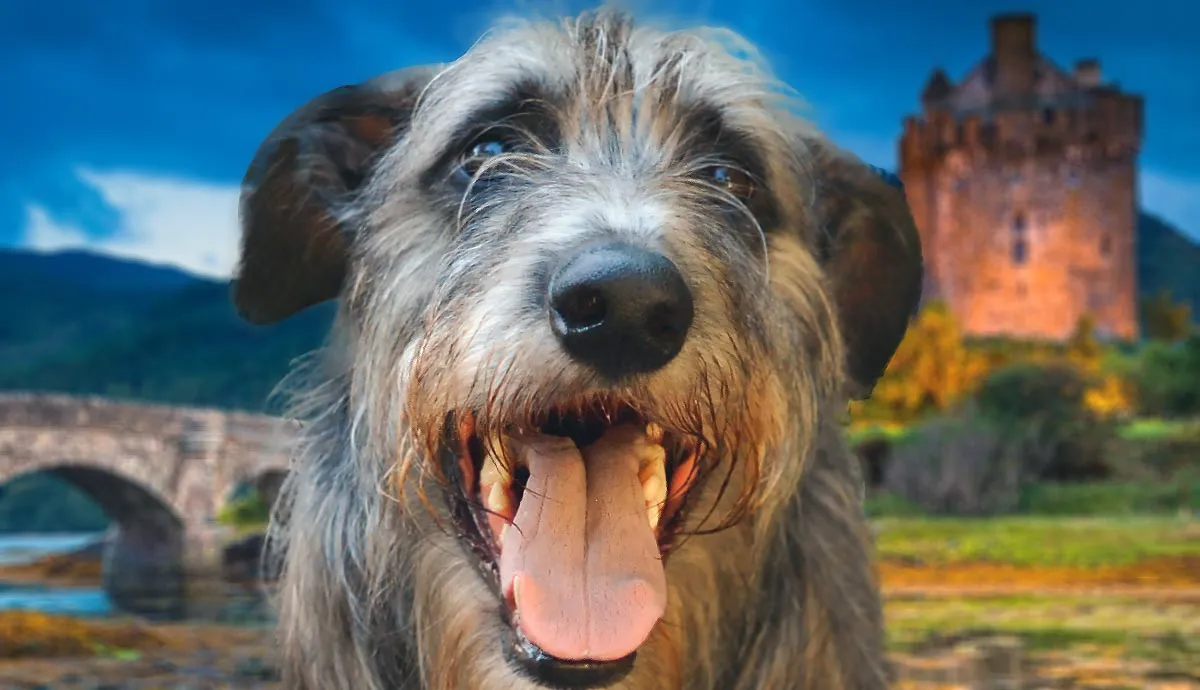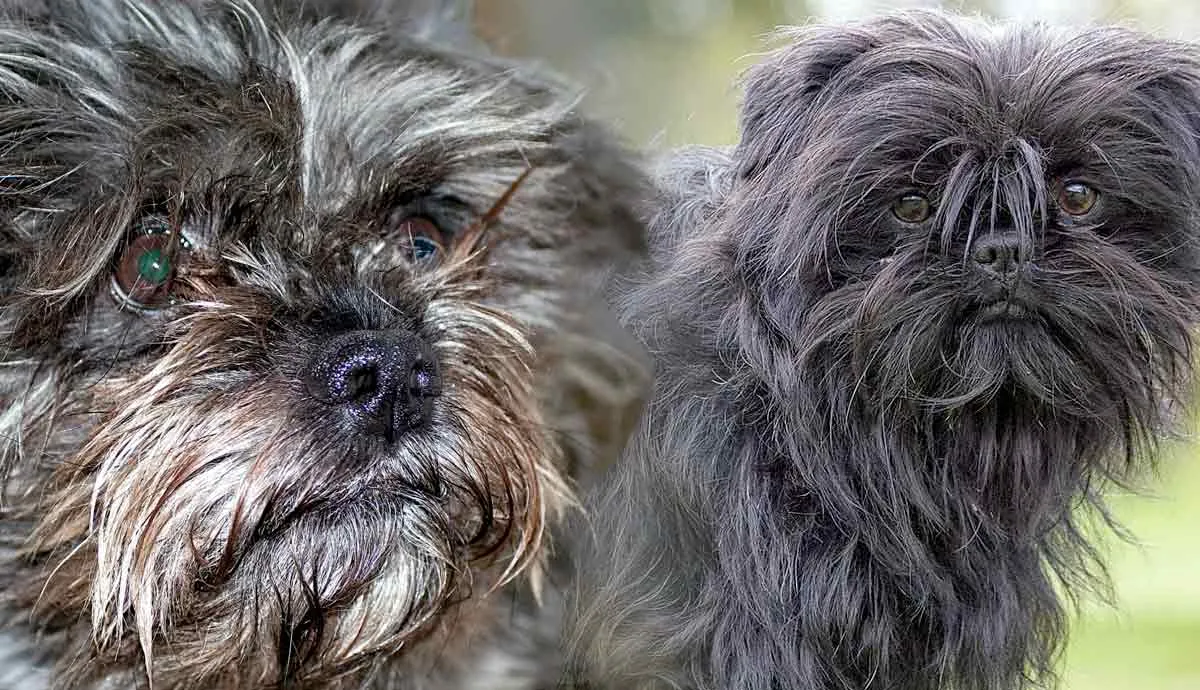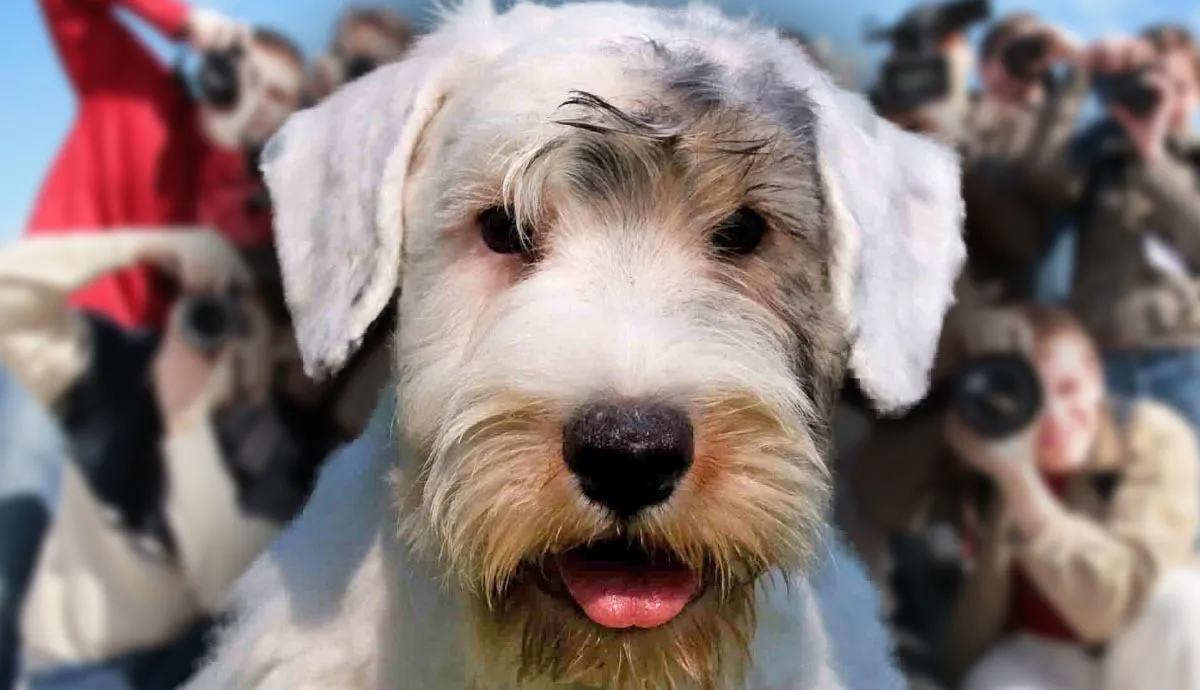If you see a dog with a beautiful coat that looks like it stepped out of a salon, chances are you’re in the company of an Afghan Hound. These lean, gorgeous canines might test a new owner’s patience, but they are sweet, loyal companions. Keep reading to learn about its ancient history, the best grooming tips, and its iconic appearances in popular culture.
Afghan Hounds Come From Afghanistan

Afghan Hounds are an ancient dog breed without a clear origin story. Their history as human companions dates back thousands of years to the modern-day areas of Afghanistan, Pakistan, and India. It is believed that they were developed as a hunting breed in the mountainous regions of Afghanistan, hence their name. Afghan Hounds are sighthounds, meaning they use their wide peripheral vision and lightning speed to locate and chase prey. When they weren’t assisting hunters, they were kept by royal families and aristocrats as a sign of their social class.
Despite their long history in the Near East, they didn’t arrive in Europe until British soldiers brought them back in the late 1800s. After gaining popularity there, they made a splash with U.S. breeders in the 1930s. Today, there are Afghan Hound clubs in the United States, Canada, Denmark, Scotland, and across the U.K.
Afghan Hounds Have a Unique Appearance
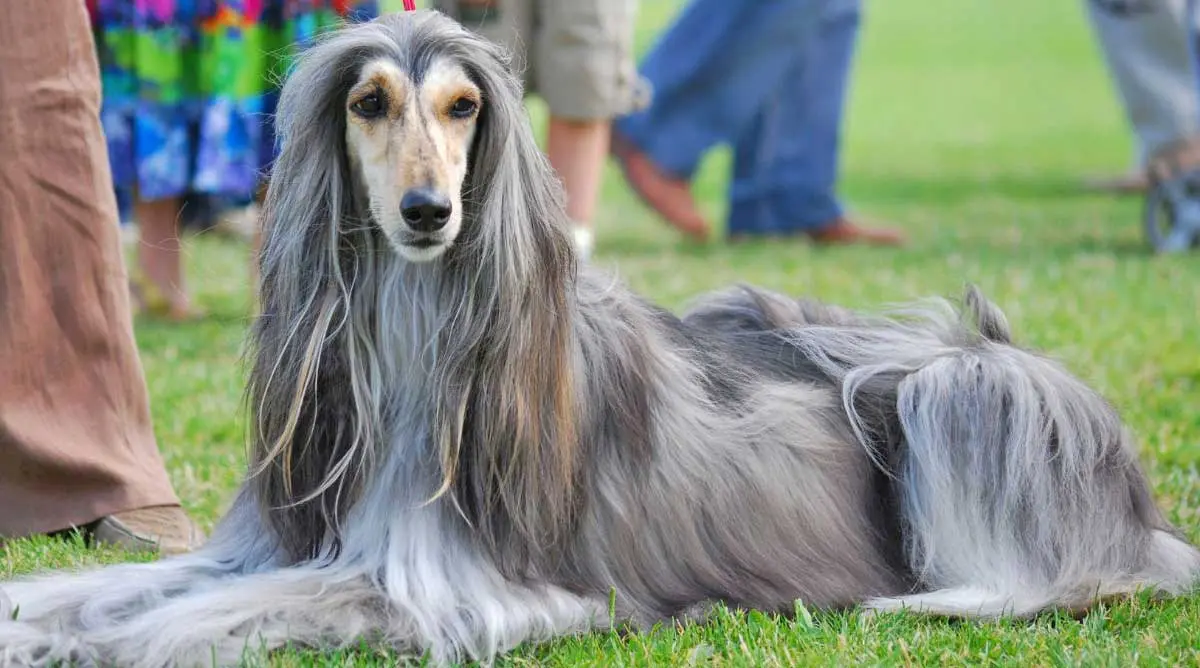
These canines became a breeder favorite because of their show-stopping appearance. Afghan Hounds don’t just enter a room; they make a head-turning entrance with their tall stature and elegant, silky locks. Originally, their fur was kept long for warmth in high altitudes and desert areas.
They stand between 25 to 27 inches at the shoulder and weigh 50 to 60 pounds. Their flowy coat comes in black, tan, blue, cream, red, white, or a mix of several shades. Afghan Hounds also have tails that curl at the end with shorter fur compared to the rest of their bodies.
Afghan Hounds belong to the dolichocephalic dog breed group. It refers to long-snouted dogs that have more oval-shaped or triangular skulls. This anatomy helps their smelling, seeing, and hunting abilities, so they can spot prey quickly.
These Dogs Have a Reserved, Calm Temperament

Because of their strong personalities, Afghan Hounds are not the best option for first-time dog owners. They are independent and see commands as suggestions. These sighthounds move on their own time and under their agenda. Yet, this doesn’t mean that they are solitary; Afghan Hounds are loyal and can get along with their owner’s family, children, and other dogs.
According to the American Kennel Club (AKC), they have average ratings when it comes to meeting new people, their protective nature, and their barking level. Even as a self-willed breed, they are the biggest sweethearts and adore their daily dose of playtime. As a bonus, Afghan Hounds are moderately adaptable to changes in their physical environment and daily routine.
The Afghan Hound Needs Consistent Grooming
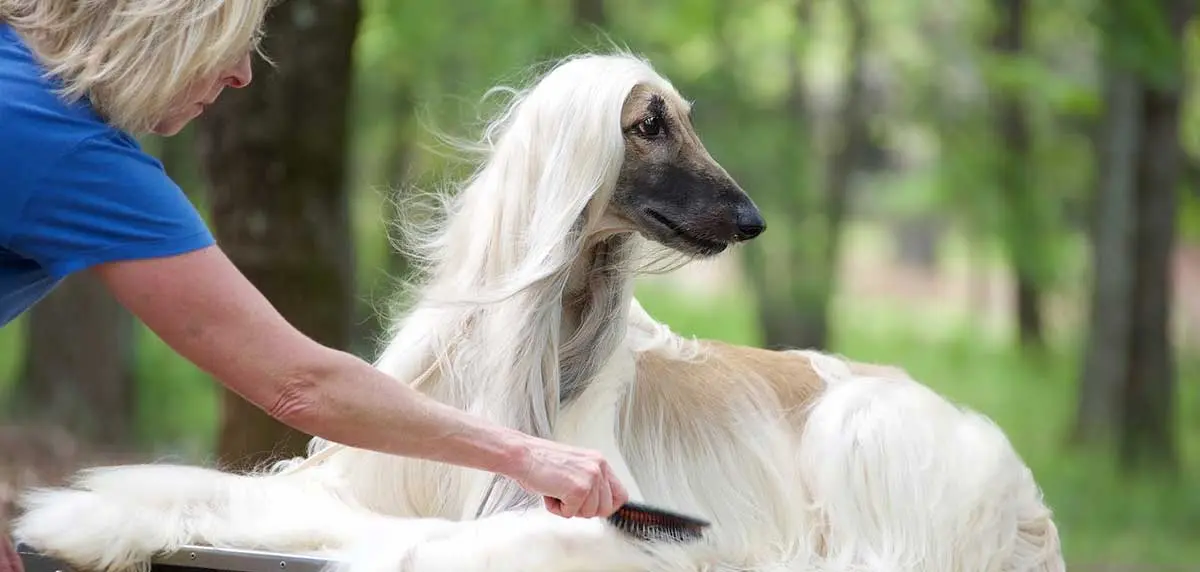
For a breed with so much fur, Afghan Hounds are not big shedders. Still, the time you save from not cleaning your bedsheets and vacuuming your rug goes toward all the hours spent brushing their fur. Brush their coat daily to prevent matting and remove any debris from spending time outdoors.
Bathing an Afghan Hound means setting aside several hours for a full session. It also involves investing in dog shampoo, conditioner, and oil meant for silky fur. These products are gently applied, not rubbed, onto the skin to avoid fur breakage and then rinsed off.
Then, they are allowed to air dry for a few hours and ideally blow-dried at a cool temperature. Show dogs need baths at least once a week, while non-competing dogs are fine with grooming two to four times a month.
Afghan Hound Puppy Fur: What to Know
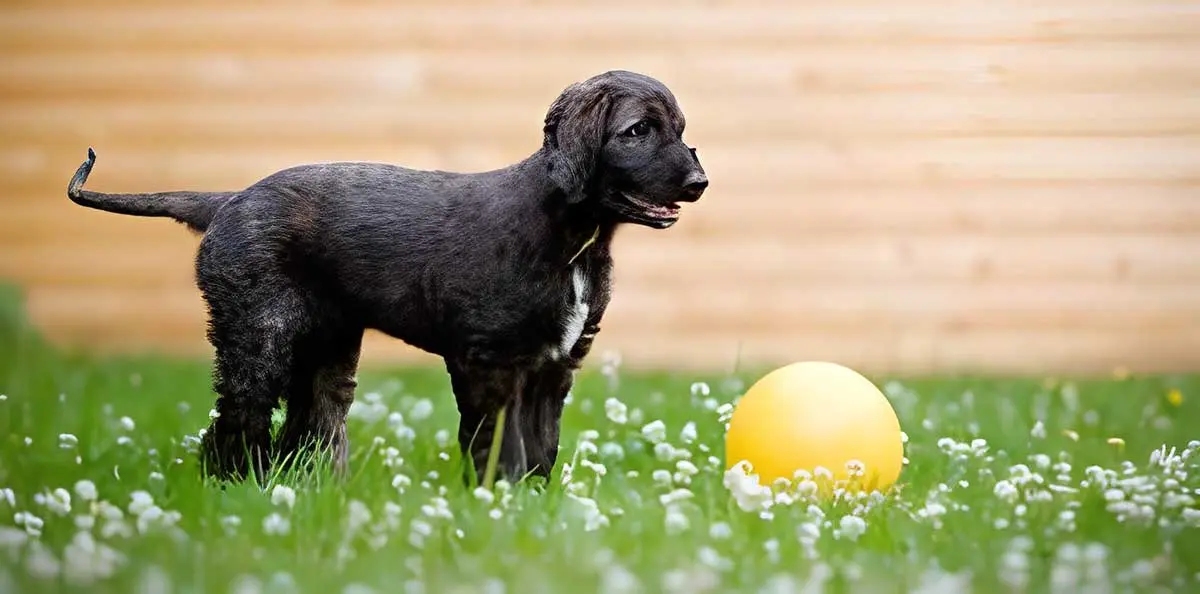
Before they emerge as elegant superstars, Afghan Hounds go through an awkward teenage phase with their fur. They eventually grow into their luscious locks but start with a short, fluffy, teddy bear-like puppy coat. As young dogs, they also have “monkey whiskers.” This adorable term refers to the thick facial hair around their chins and mouths that sheds around one year old and makes way for their adult coat.
Since their puppy fur isn’t as delicate, owners can get away with brushing it a couple of times a week and fewer baths than adult Afghan Hounds. However, you might consider starting the complete, hours-long grooming experience early on so the pup gets used to the routine.
These Sighthounds Require Exercise
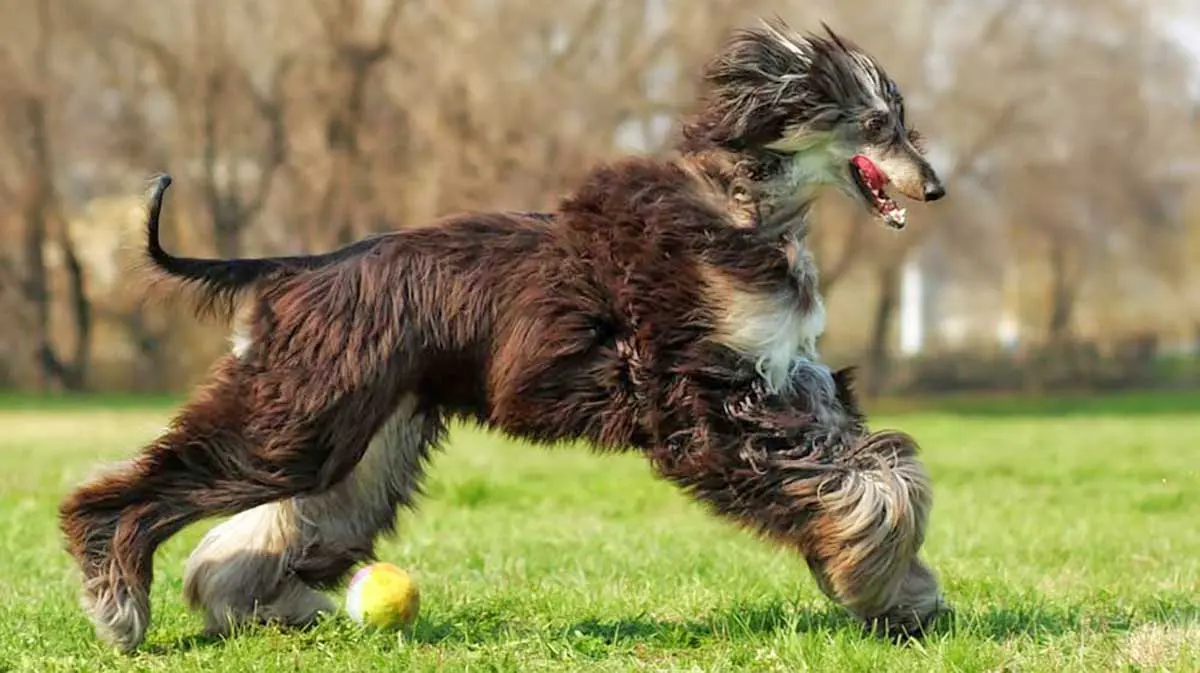
As hunting dogs, this breed thrives on daily exercise. They work best with owners who have active lifestyles and enjoy long walks or runs several times a week. Afghan Hounds are one of the fastest dog breeds in the world and can reach speeds of 40 mph, so they need human companions who can keep up. Because of their aloof personality, keep them on a leash at all times and avoid being that person chasing after their dog.
Afghans need a large backyard area or enclosed dog park where they can let out their doggy energy. As a larger breed, these dogs need enough room to run several paces before reaching the end. Note that high fences are a must. These dogs have long legs and can jump over gates if they see something worth chasing.
For hot climate areas and summertime, make sure your Afghan Hound drinks water and takes breaks in shady areas while exercising. Their insulating fur can make them more likely to overheat.
Afghan Hounds Are Hard to Train

As mentioned earlier, Afghan Hounds are stubborn and difficult to train. They often give in to their ancestral instincts and chase the object of their attention, regardless of their owner’s directions. Unless you are training them for obedience, agility courses, or races, teaching them simple commands will work for everyday communication.
For the calm and collected owner, training an Afghan Hound how to maneuver courses can be one of the best bonding experiences. These canines are fantastic jumpers and climbers so they have a blast leaping through hoops or and bouncing between weave poles. Another adrenaline-fueled option is racing your dog on tracks and seeing their status as one of the globe’s quickest canines shine.
Even These Dogs Have Health Concerns
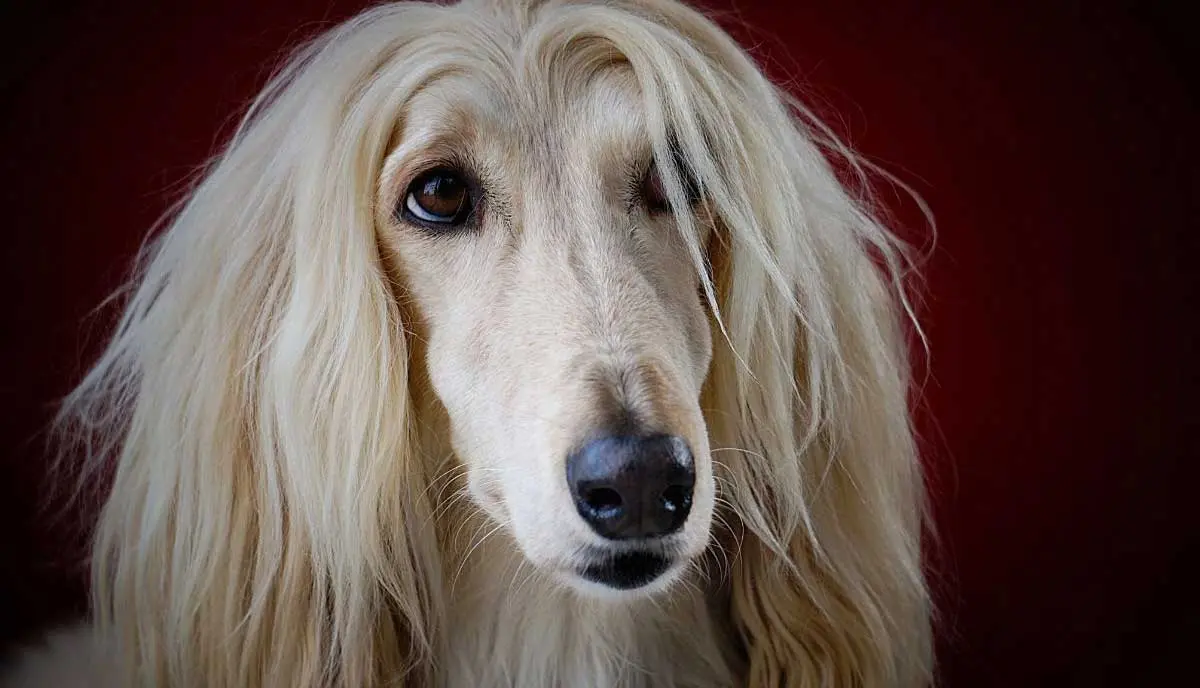
Regular checkups are crucial for ensuring your pup is healthy and comfortable. Two health issues Afghan Hound owners must screen for are chylothorax and bloat. Chylothorax occurs when lymphatic fluid (chyle) fills the area around the lung. It causes chest pain and makes breathing difficult; a dog may have a persistent cough and lose weight and appetite. A vet will take a radiograph of the dog’s torso and collect a sample to confirm the condition. Treatment includes draining the liquid from the area or surgical procedures for repeat occurrences.
Bloat is a painful illness where a dog’s tummy expands and fills with air, and in severe cases, it twists, stopping blood flow to the heart and stomach lining. Bloat can develop and become fatal within hours: immediate action and an urgent surgery at a pet hospital save a pup’s life. Unfortunately, it’s unknown what causes this illness, but the AKC’s Canine Health Foundation has noted a connection between larger breeds and bloat.
Meet a New Designer Breed: the Afador
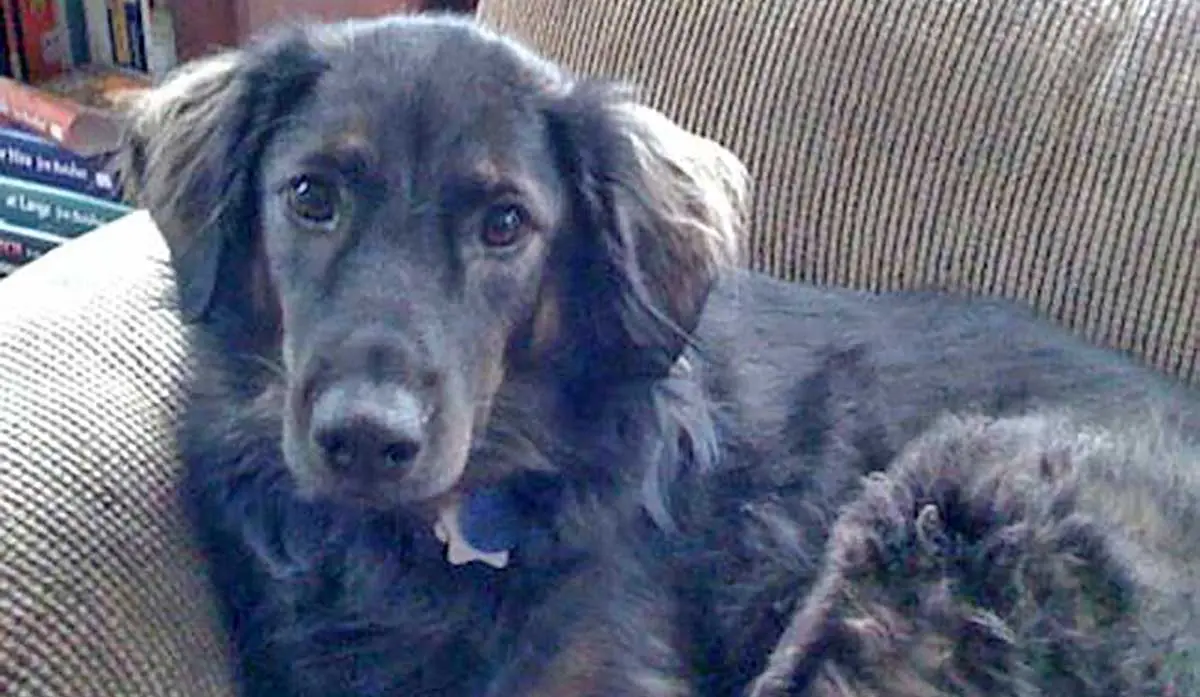
Say hello to a rare breed that comes from mixing an Afghan Hound and Labrador Retriever: the Afador. It’s believed that this mix was developed in Alaska, and they have recognition from the Designer Breed Registry and the Dog Registry of America, Inc. Even with the acceptance, breeders have had challenges establishing a standard appearance and personality.
As with mixing any breeds, it’s never 100% certain which traits the pups will inherit. The Afador litter may have the Afghan Hound’s tall build and silky coat or the Labrador Retriever’s short fur and sturdier frame. Afadors may also be as independent as their Afghan Hound parent, gain their Labrador Retriever parent’s eagerness to train, or land somewhere in the middle. The only guaranteed traits are that these two breeds will birth high-energy, playful pups who love running around.
Afghan Hounds in Popular Culture

Afghan Hounds have gained high-profile celebrity fans since their European and North American debuts. Pablo Picasso’s adoration for the breed was well-known, and he owned several throughout his lifetime. He even built Chicago Picasso, a 60-ft steel sculpture in downtown Chicago, to resemble one of his beloved pups. Despite initial mixed reviews, it has become a landmark for locals and tourists.
In the late 70s, Mattel released Barbie’s dog companion, an Afghan Hound named Beauty. The tan-coated pet came with a hot pink dog bed, brush, sunhat, tiara, and other fun accessories. A few years after the toy’s success, another package called Beauty and Puppies was released. It had similar items as the first collection with the bonus of two Afghan Hound puppies.
Snuppy, an Afghan Hound Clone

Did you know researchers at South Korea’s Seoul National University (SNU) cloned the first dog in 2005? The black and tan puppy, called Snuppy, was created from the ear cell of an adult Afghan Hound and lived to be 10 years old. Per Time Magazine, it was a process that took several years, millions of dollars in funding, and over 100 surrogate dog moms before a pup lived longer than a few weeks.
In 2008, Snuppy fathered puppies with two cloned female dogs. Their offspring became the first litters of Afghan Hounds with clone parents, and 9 out of the 10 pups survived. According to SNU’s reports, the females showed typical behavior during and after their pregnancies. Yet, Snuppy had to warm up to his fatherly role and the presence of his mini-mes.

